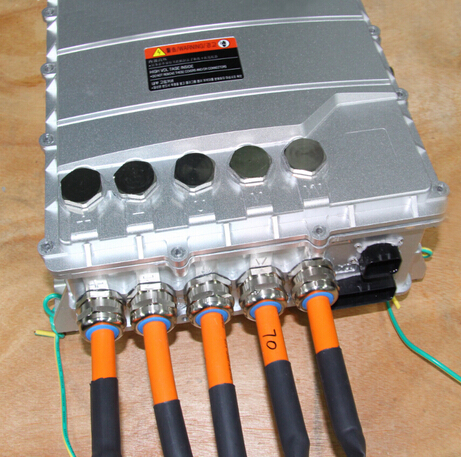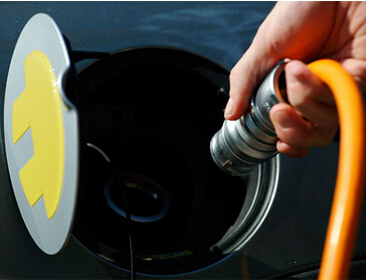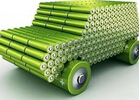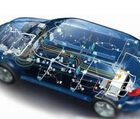What is "extended program" (REEV)
Before talking about why Vision makes ONE as an add-on instead of pure electricity, let's first understand what is an "extended program hybrid car"? We can call it an "extended program hybrid car", because this model does carry an internal combustion engine, but in a strict sense, we should call it an "extended electric vehicle"! The reason is that the official term of the internal combustion engine mounted on this type of vehicle is called "range extender". As the name implies, it is not used to directly drive the wheels, but is used to drive the engine to charge the car battery, so it is judged whether a car is an extended program. The simplest definition is: a car that is powered by an internal combustion engine but always powered by electricity.
The principle of the extended-range electric vehicle is actually very simple, and it is divided into two cases:
Under the condition that the battery is fully charged: the extended-range electric vehicle is a pure electric vehicle. It has the same performance characteristics as pure electric power. It starts with full torque output, runs quietly and without noise, and the internal combustion engine is in a dormant state. Generally, the cruising range of the extended-range electric vehicle is slightly weaker than that of the pure electric vehicle. This is because the self-weight of the internal combustion engine is not light, and the capacity of the battery is not too large in order to avoid the excessive consumption of the whole vehicle.
In the state of battery power feeding: the power part of the extended motor can be regarded as a simple series structure, namely: internal combustion engine (range extender) → motor No. 1 → battery → motor No. 2 → wheel. In the fully-powered state, only the "Battery → No. 2 motor → wheel" part is working, and when feeding, the internal combustion engine is automatically started by the driving computer, which drives the No. 1 motor to charge the battery, that is, the kinetic energy is changed. Store for electrical energy.
 So how do we know when it is a feed time? Or when will the internal combustion engine start? Here we introduce a concept: the state of charge (SOC), which is used to reflect the remaining capacity of the battery, and its value is defined as the ratio of the remaining capacity to the battery capacity, usually expressed as a percentage. The value ranges from 0 to 1. When SOC=0, the battery discharge is complete. When SOC=1, the battery is fully charged. The SOC value of each car company is not the same, but don't underestimate this value. It is related to the internal combustion engine displacement, battery capacity, driving quality and even the power feeling of an extended-range electric vehicle!
So how do we know when it is a feed time? Or when will the internal combustion engine start? Here we introduce a concept: the state of charge (SOC), which is used to reflect the remaining capacity of the battery, and its value is defined as the ratio of the remaining capacity to the battery capacity, usually expressed as a percentage. The value ranges from 0 to 1. When SOC=0, the battery discharge is complete. When SOC=1, the battery is fully charged. The SOC value of each car company is not the same, but don't underestimate this value. It is related to the internal combustion engine displacement, battery capacity, driving quality and even the power feeling of an extended-range electric vehicle!
First, explain why the SOC affects the displacement and battery capacity of a car. Suppose that the displacement of an internal combustion engine of a certain brand is only 1 liter, which means that the internal combustion engine acts as a "generator" to drive the motor. The ability to generate electricity is certainly not as good as that of a larger displacement engine, and in order to effectively reduce fuel consumption, the internal combustion engine of the extended-range electric vehicle always works in the most efficient narrow range.
In simple terms, the amount of charge is constant, and the larger the displacement of the engine, the more electricity is charged into the battery per unit time. Then if the SOC value of this car is set too low, it is assumed that only "0.1" means that the internal combustion engine starts to charge when the battery is only 10% of the power, and only the remaining power is very rare, then the driving computer can only Limiting the speed at which you drive, naturally affects the driving quality and power output.
Obviously this is very unreasonable, so an engine with a small engine displacement will be set higher when setting the SOC value to avoid the above-mentioned limited power output. In addition to this, there is a way to avoid the problem, that is, increase the capacity of the battery, so that even if the SOC is set lower, the remaining power in the battery is enough for your large throttle to overtake, so the internal combustion engine of the extended-range electric vehicle. And the battery needs at least one of them to be strong. Of course, both of them are strong and naturally the best, that is, the car is heavier, making it more costly to drag the huge body. How to balance the balance between weight and displacement and battery capacity is Car companies need to explore for themselves, and one of the important means of adjustment is the SOC value.

Mileage problem
This is the pain that pure electric cars can never be circumvented. In the volume of electric energy storage, the bottleneck period has been encountered all over the world. The technology of shrinking the volume is generally slow to progress like toothpaste. If there is still no one in the future to break through in battery storage technology. The life of pure electric vehicles will still not get a perfect solution. The use of gasoline-assisted in the case of feeders is one of the best ways to transition.
Policy issue
At present, the domestic new energy policy has been changing and there is no clear prospect. In the future, no one can say for sure, but from the experience of foreign countries, the prospect of extended-range electric vehicles (REEV) is still more than that of pure plug-in hybrids. The move (PHEV) is better because the policy tilt and subsidy standards are very clear. The car can't have the engine directly connected to the wheel, which means that the car's wheels are not directly driven by the internal combustion engine. Obviously, the plug-in hybrid is not In line with the regulations, the I-MMD system carried by the Honda Accord is very similar to the extended program system, but because of the direct connection of the engine to the wheels during high-speed cruising, it does not enjoy the subsidies and new energy of the extended-range electric vehicles. License benefits.
Is it because Honda is stupid? Actually, it is not because the internal combustion engine drives the motor to generate electricity into the battery, and then the output from the battery to the No. 2 motor drives the wheel to rotate, which will generate a lot of heat consumption, which wastes a lot of energy, even if the internal combustion engine like the ideal ONE is not only charging. Directly driving the No. 2 motor drive wheel will still lose a lot of energy, far from the high efficiency of the direct drive of the internal combustion engine. It seems that the increase program is not perfect. It is only a comparison before the future of pure electric power becomes practical. Good alternative
















 RCCN WeChat QrCode
RCCN WeChat QrCode Mobile WebSite
Mobile WebSite
![[Charge pile principle] electric vehicle charging pile principle Secret](/upload/image/20170504/20170504090205_67304.jpg)






